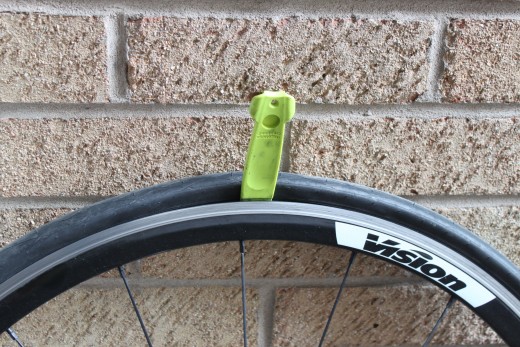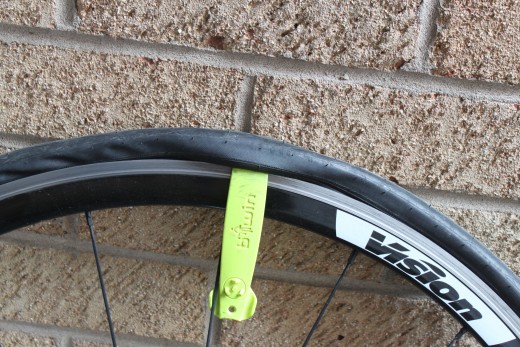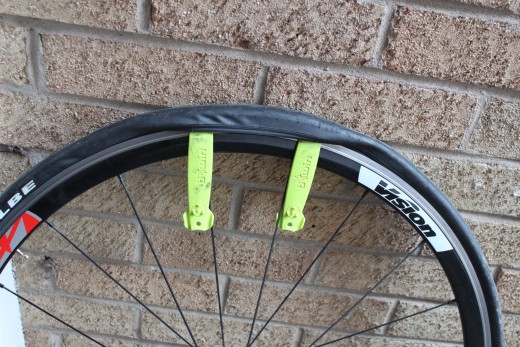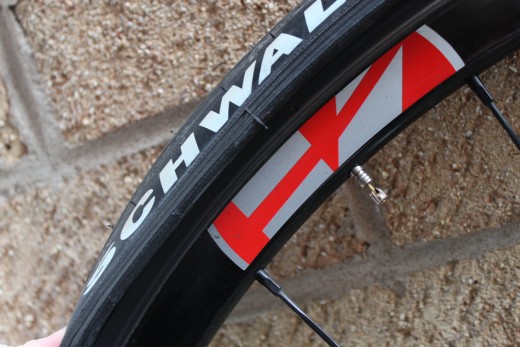How to Change a Bicycle Tire
A Step By Step Guide: How To Change A Bicycle Tire And Inner Tube
Whether you have children whose bicycles you have to look after and maintain, you commute to work each day, or ride a bike for sport or fitness- it’s a fact of life that at some point you are going to suffer a puncture and sunsequently need to change a bicycle tyre or replace an inner tube.
Changing a bicycle tyre is a relatively simple process and can be done by almost anyone young or old. Whether you need to sort a flat tire by replacing an inner tube or simply want to change your old bicycle tire you'll find out how to do so below in a simple step by step guide.

Equipment You'll need to fit a bicycle tire or inner tube
|
|---|
Bicycle Tire
|
Inner Tube
|
Tire Levers
|
Bicycle Pump (Hand or Floor/Track)
|
Cleaning materials (for your hands and bike)
|
Do you need a bicycle pump?

Equipment you'll need to change a bicycle tire or inner tube
There are just a few basic items that you need for changing a bicycle tire or inner tube at home or on the move
- Tire levers
Ideally you should have 3 tire levers as these take the strain of removing the bead of the bicycle tire from the hooked rims (also known as clincher rims) found on most low to mid range mountain bikes and on the majority of road bicycles.
- A New Inner Tube
Always have a few inner tubes at home in case of emergency
- A new tyre (if replacing your tire)
Replace your tire old tire if it has become damaged,n overly worn, has cuts in the tread or simply if you have the need to use a different tire on your bicycle.
- Bicycle Pump
On the move you can carry a portable pump to re-inflate your bicycle tires however it's recommended to have a floor pump at home as this will make the task of re-inflating your tires a lot quicker. They can also be used at home for footballs and car tires too.
Step 1- Clean your bike and wheels
There's nothing worse than doing maintenance on an already dirty bicycle. The dirt seems to get everywhere so before you start to change your bicycle tire aim to have a clean bike. Plus why would you want to fit a new bicycle tire to a dirty bike?
A clean bike leads to a lot less mess when fitting a new bicycle tyre.
Step 2- Release your brakes
Before you remove your wheel from the frame or forks to change your bicycle tire you must release your brakes. This involves releasing the brake cable from it's housing in the brake itself. Examples of which are featured in the below photographs.
- Many mountain bikes now have disk brakes- these do not usually require release and one a quick release mechanism is opened fully the wheel should slide outwards.
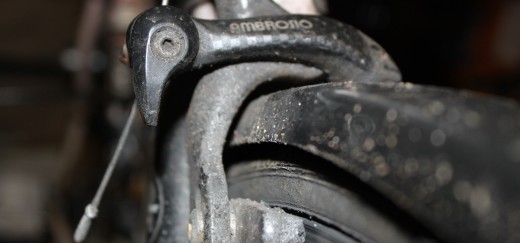

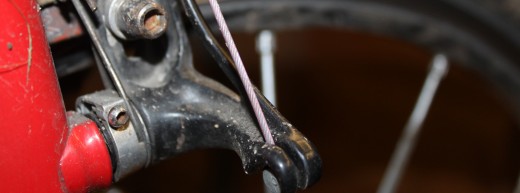
Step 3- Remove the wheel from the forks or frame
Front wheel removal
If you are removing your front wheel you need to fully open your quick release lever or loosen off the bolts using a sprocket set. Once the bolts are loose beyond a certain point the wheel will simply slide out of the dropouts.
Rear wheel removal
As you need to remove the wheel from the working drivechain you need to shift your chain onto the outside (smallest) sprocket at the rear and your largest chainring at the front. You can then release the quick release or unscrew the nuts holding the wheel in place. Then slide the wheel forwards in the dropouts and away from the chain.

Step 4- Release any remaining air from the inner tube
Physics helps to keep your bicycle tire in place while you're riding your bike. Your inner tube inflates and the aire pressure inside the inner tube holds your tire in place due to the hooked rims. Therefore you need to remove the air pressure from your inner tube to allow for removing your bicycle tire.
Simply remove any valve cap and press in the inside of the valve to release the air pressure from the inner tube.
Step 5- Removing a bicycle tire in photo's
Click thumbnail to view full-size



Need some tire levers?

Step 5- Remove the tire from the rims with tire levers
Your bicycle tyre is hooked to your rims and you now effectively need to lift the wire or kevlar bead of the bicycle tire over the hooked lip of the rim.
Removing a bicycle tire
- Slide a tire lever between the rim and tyre so that the tire lever effectively protrudes vertically upwards from the rim.
- Pull the tire lever towards you in a downward circular motion (a bit like pulling a pint of ale in a bar).
- This will prise the bead away from the hooked section of the rim
- Most modern tire levers now allow you to 'hook' the tire lever around a spoke to hold it in place so you can keep your hands free.
- Follow steps 1 to 4 with another tyre lever around 5-10 cm further round the tire.
- The tire should now start to come free from the rim
- Slide the remaining tire lever around between rim and tire to unhook
- You should now be able to unhook the opposite side of the rim by sliding a tire lever between the tyre bead and rim
- You've now removed your bicycle tyre from the wheel rim and con proceed with the next phases to fit your new bicycle tire.
What to do once you've removed your old bicycle tyre and inner tube?
Check your rim and bicycle tire for signs of damage
Before you commence fitting a new bicycle tire and/ or inner tube it's always best to have a good thorough check of the state of your bicycle tire and rim.
Visibly and physically check your rim for any cracks large scratches to the rim surface and damage as additional braking pressure could further damage the rim and lead to a severe problems while you're riding- particular through rim blowout!
Check your bicycle cycle for visible signs of excess wear and cuts. Also run your hand around the inside of the tyre and feel for sharp objects which my have become stuck into the tyre carcass over time as these can cause further punctures.

Step 7- Install a New Bicycle Tire or Inner Tube
1. Fit one bead of your bicycle tire to the rim with your hands. It's usually best to fit the opposite bead to the direction you're facing. If you're using direction specific tyres pay attention to any arrows on the tire sidewalls which direct the recommended tread flow.
2. This should allow you to ease a slightly inflated inner tube around the internal chamber of the tire and slide the valve extender of the inner tube down into position where there is a cut out section of the rim.
3. Using your hands work the loose end of the tire bead over the rim and into place secured by the hooked section of the rim. It's usually best to start close to the point of the inner tube valve. If you can complete this section of the task with your hands only you can use a tire lever. Levering it between the tyre bead and rim you can lift the bead over the rim and into place.
4. Your tire should now be fitted in place on the rim
5. Check between the edges of the tire and rim that no sections of inner tube are handing outside. These will lift the bicycle tyre off the rim if you inflate the tyre and must be addressed prior to inflation.
6. Using the guide tire pressure on the tire sidewalls inflate your inner tube using a hand or track pump.
7. Now you can slide your wheel back in place within the forks or rear dropouts and ensure you tighten the wheel nuts or quick release lever adequately to hold the bicycle wheel in place while riding.
Changing a bicycle tire; Schwalbe Durano tire fitted and ready to ride
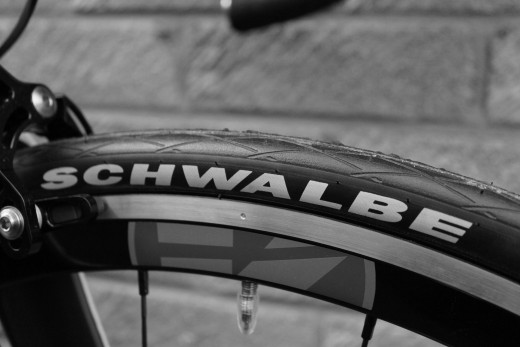
Considerations: When should you change a bicycle tyre?
- For road cycling you should consider changing a bicycle tire once it has been ridden for around 2500 miles (4000 kilometres).
- Usually you can tell that a road cycling tire is ready to be replaced when the tread begins to wear out and starts to flatten.
- It is also ideal to replace a road tire if you get any large cuts to the carcass. Small cuts of a few milimetresshould not usually cause any problems, however any larger cuts to the tire can get forced open over time while riding at high tire pressures.

